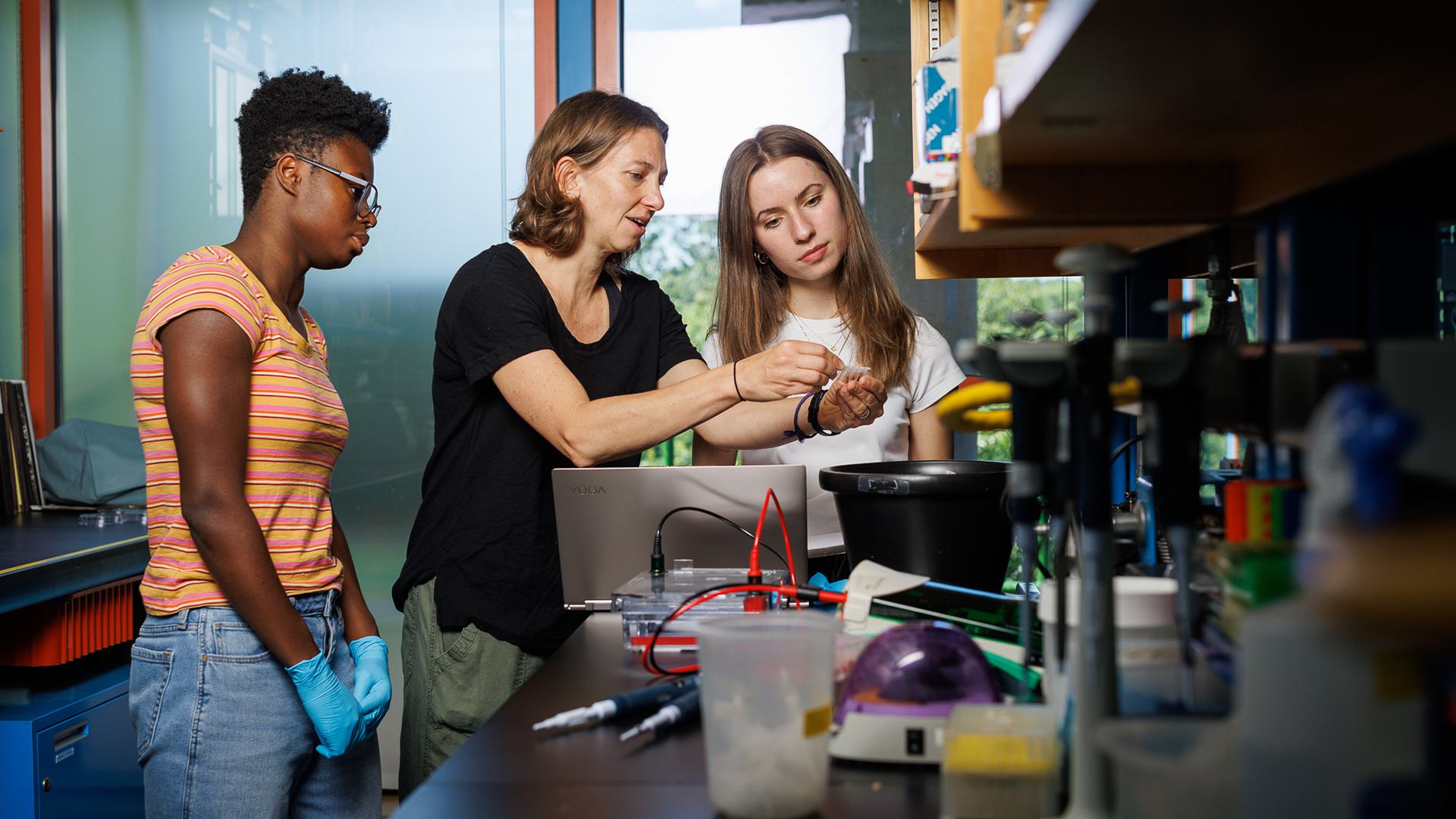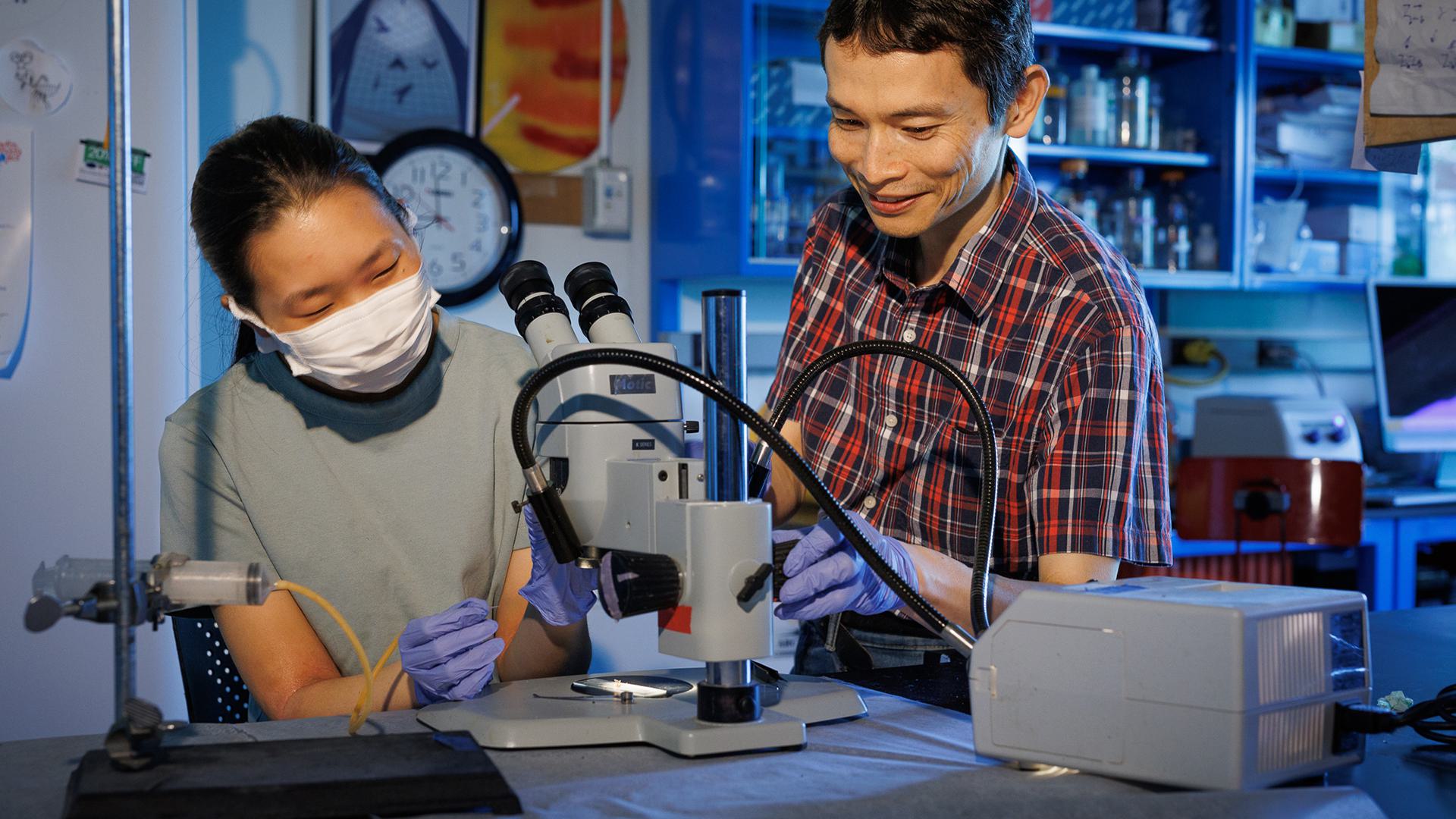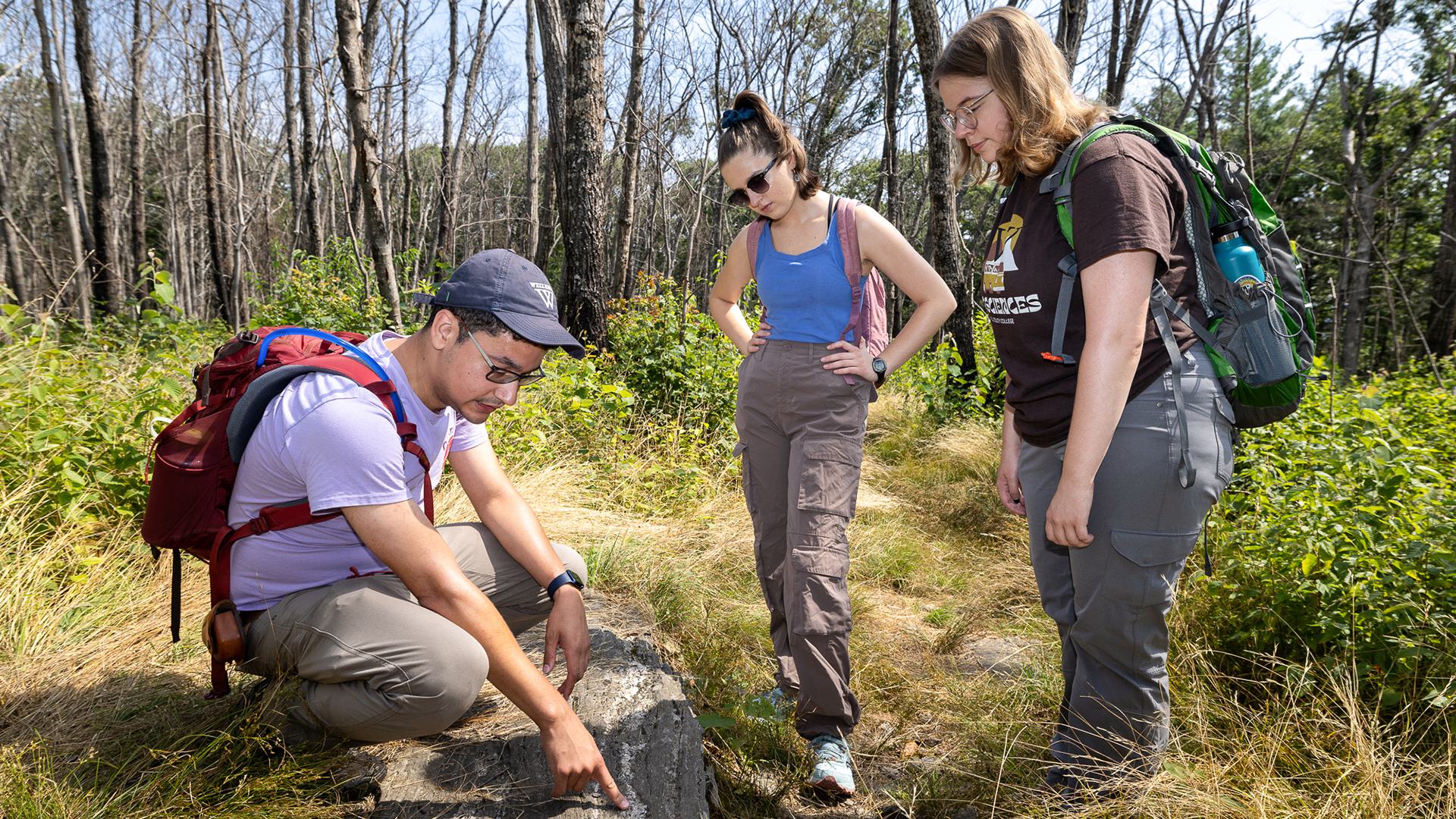Each summer, students in Wellesley’s Science Center Summer Research Program stay on campus to work on projects with faculty in a variety of disciplines. At the end of the program, which is open to all students regardless of research experience, they present their work during a poster session.
“I enjoyed the autonomy and chance for leadership that the summer research program has given me,” said Scout Painter ’25, who worked in the lab of Adrian Castro, assistant professor of geosciences. “I was able to design and begin a project that I am really passionate about, and I have been given the resources and mentorship to feel supported throughout this work.”
“It’s an eye-opening and empowering moment to experience alongside other Wellesley sibs,” said I-see Warisa Jaidee ’25, who joined Professor of Physics James Battat’s lab. “The faculty members will always be there to help you customize the experience to match your goals. I’d strongly recommend this program to everyone.”
Photographer Joel Haskell stopped by some of the labs over the summer to capture the students and faculty at work.




